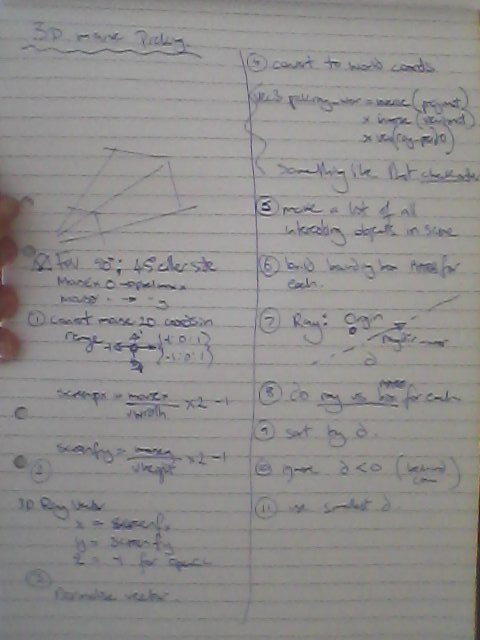
I assumed the IFC format would be a little like Wavefront Obj; text-based, and containing a series of 3D points. My first attempt at a parser grabbed everything that looked like a 3D point, and I rendered the lot as a cloud of 3D points: ifcview prototype. Great! Something looked okay. You can see the revolving door from the building model, but that's about it. The door seems to be hanging in space, and there are some points from the bottoms of the foundations in another area. Okay...so some assembly required.
On closer inspection the IFC format is really not very nice, and certainly not designed with parsing efficieny in mind. It takes a very long CPU time, and a lot of memory, to assemble geometry from an IFC file. This means that they are unsuitable for loading into a viewing application on the web. I kind of expected this; and that's okay because I am already pre-processing my .Obj format meshes into a JSON format, so I can do that with IFC as well.
Rewrote my parser to load the entire file into a hash-table accessed dynamic structure. Made a log of all unique and
unhandled (by my
parser) IFC elements in the file. Good. Started to step through the IFC specs to find a good starting point. Messy.
Very very messy. Lots of
cross-references. Lots of meta-data junk that can be thrown out. The API/spec for IFC2X3 says that
The IFC to Obj converter that I found worked. It used a format that my obj parser didn't have, and it didn't export any texture coordinates (which I need just temporarily for my demo). So, I imported it into Blender3D, which worked. But - big problem. The model requires a lot of manual clean-up before it is 'render ready'. Orientation, origin location, and various offsets are all a bit off. There are an enormous number of duplicate vertices, and too many sub-meshes (which gave me a neat research idea for later). Existing WebGL IFC viewers suffer from some pretty poor rendering rates - I think probably due to this. So, I batched it all together into one cleaned-up, plum mesh, and exported it with texture coordinates. Conversion with my tool into Obj worked splendidly, and I have a sample running here ifcview2. It's running much faster than existing webgl tools which I tested with the same IFC file. Looking good.
It might be nice to rewrite the IFC to Obj converter tool that I found. Perhaps I can eliminate duplicate mesh data, and do all the bits that I did manually in Blender3D and go straight to JSON instead of Obj. Skeptical. Could be a waste of time. It would be nice to do this to get a custom JSON format - I have a plan to make some optimisations based on building structure and elements. It would also be nice to put some textures onto different elements (perhaps based on a palette).
Eventually I'll need to construct some tools to interact with the building. It's going to be a mix of jquery controls and point and click stuff I think. Probably worth playing with some options.
I don't have my textbooks handy and I couldn't find a straight-forward guide so I just nutted out how to do 3D mouse picking on paper by guessing (I've never implemented it directly). I think I've got it right. Just have to double-check the order of matrix multiplications to go from a direction vector in the coordinates of the camera into world coordinates...
